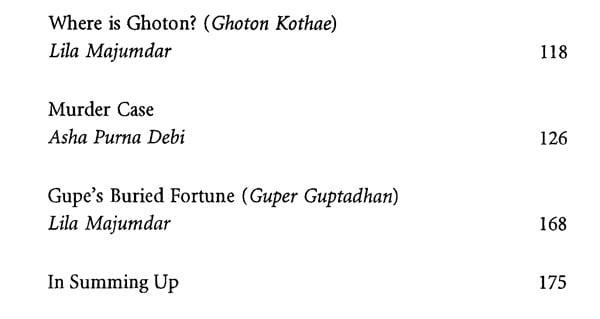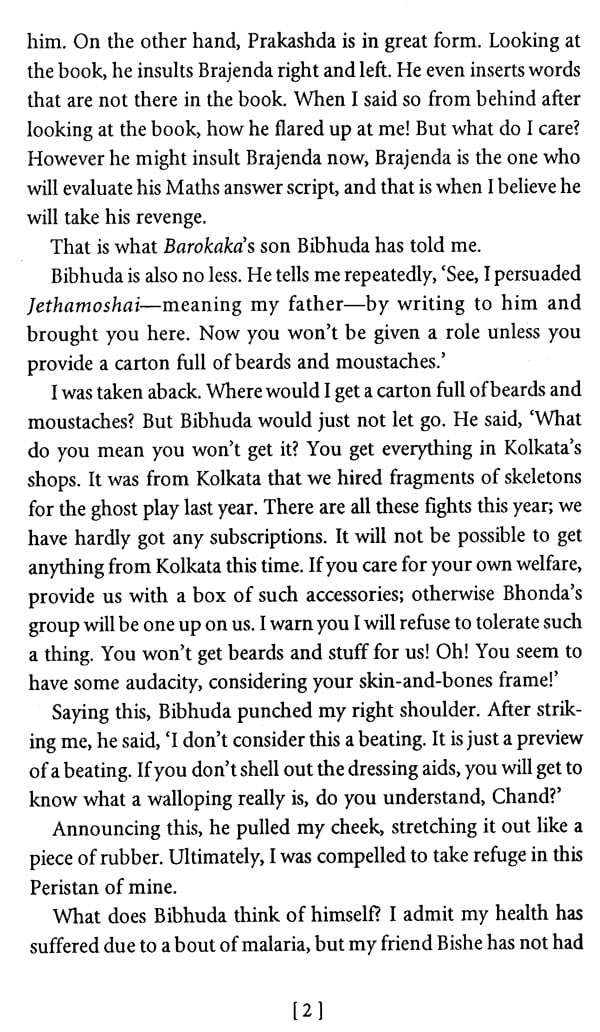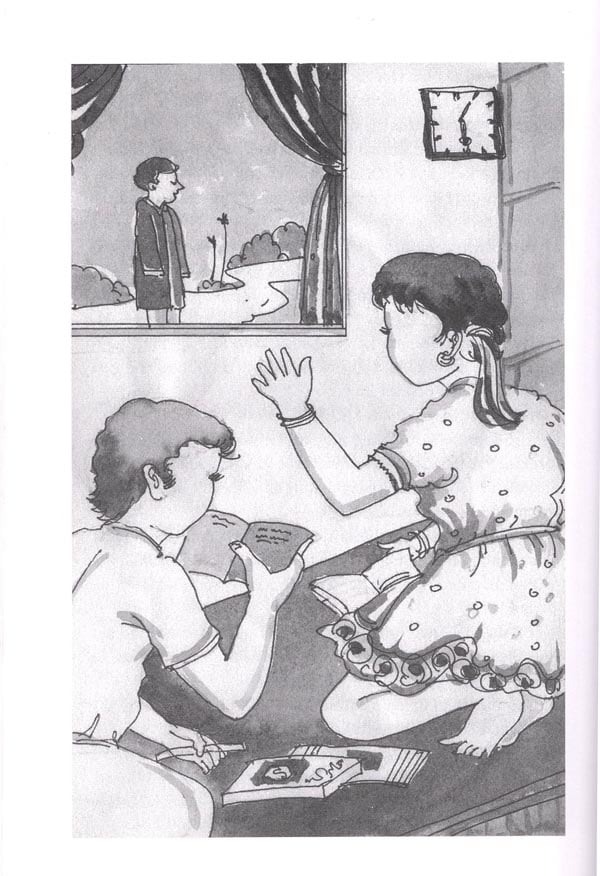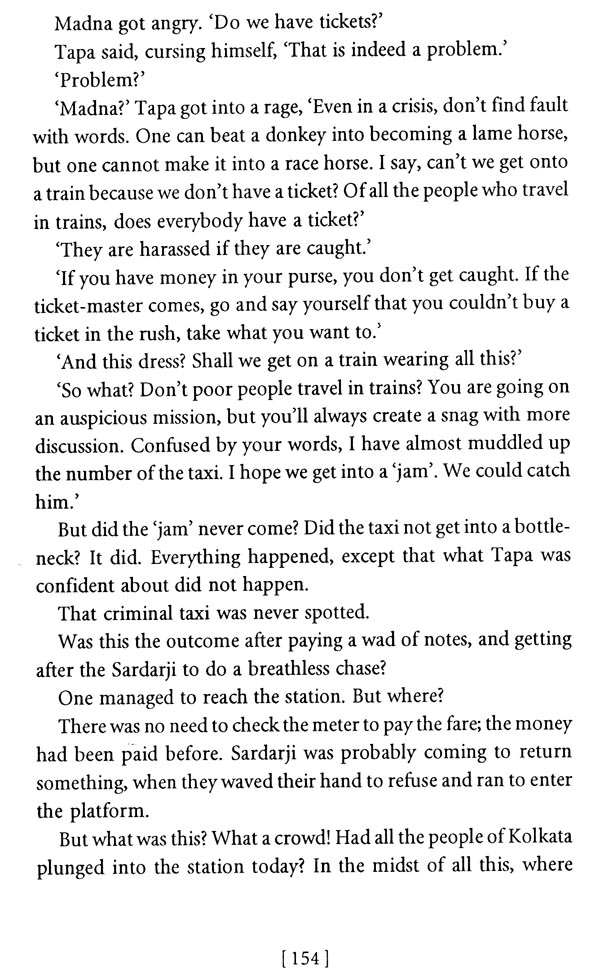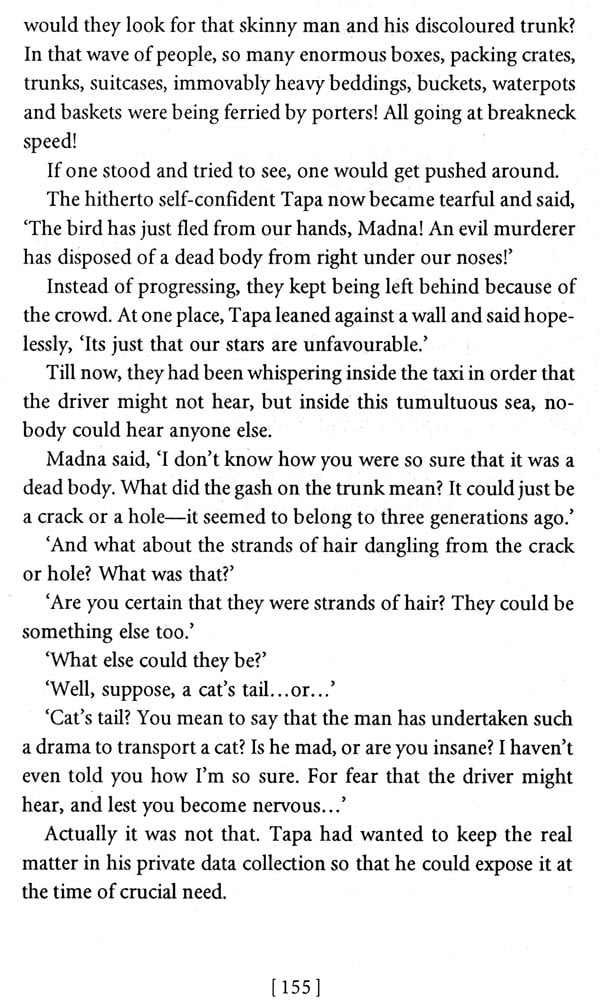
Tong Ling Express (A Selection of Bangal Children's Stories)
Book Specification
| Item Code: | NAR275 |
| Author: | Nivedita Sen |
| Publisher: | Sahitya Akademi, Delhi |
| Language: | English |
| Edition: | 2010 |
| ISBN: | 9788126028481 |
| Pages: | 237 (10 B/W Illustrations) |
| Cover: | PAPERBACK |
| Other Details | 8.50 X 5.50 inch |
| Weight | 320 gm |
Book Description
The translated stories in this volume are written by some of the most well-known writers for children in Bangla across the twentieth century-Sukumar Roy, Sibram Chakraborty, Lila Majumdar and Asha Purna Devi. They are all set within the everyday situation of home and school in which children hardly have any outlet or access to adventure. Since the stories are not intended for toddlers, their readers cannot be expected to take a break from reality by identifying themselves with fantastic dreamscapes and relocating themselves beyond the realms of the possible. How, then, do child characters/readers of a somewhat older age group add some color and spice in their otherwise dull lives? Find out for yourselves...
Nivedita Sen's translations from Bangla to English include Rabindranath Tagore's Ghare Baire and Syed Mustafa Siraj's short stories. She has co-edited a selection of essays on Mahasweta Devi. In this anthology, apart from translating, she has also critically engaged with the popular subject of children's fiction on which she has been working. Her' doctoral dissertation on paradigms of childhood resistance in Bangla is to be published shortly. She also works on children's publishing, postcolonial writing and popular fiction. She teaches English at Hans Raj College, University of Delhi.
IN MY INTRODUCTORY observations, when I try to engage with the overarching theme of the stories I have translated and some of the issues that ramify from them, I do not really target young readers who would be more interested in reading the stories for what they are worth. I am, at present, addressing those adults and young adults who might just be getting interested in children's literature, or more specifically, Bangla children's literature as an academic discipline. In India, till quite recently, children's texts were peripheral to the literary canon, and are still in the incipient process of being incorporated in the mainstream of academic discourse. The children's literature that I focus on does not belong to the genre of fairy tales, folk tales, myths and parables, retold or otherwise, but constitutes stories written in the realistic mode that stand on their own feet. These twentieth century juvenile texts in Bangla largely cater to the entertainment of respectable, middle-class children, giving them a window to an unexplored world filled with inexhaustibly enlivening possibilities. Their narrative manipulates situations where things can go wild for a while, but almost always stops short of suggesting such aberrations as alternatives to the norms of conformity. Although the stories are about deviant children who want to embark on or actually get co-opted into outlandish experiences, these child characters are eventually tamed to function within the parameters of respectable households, not overstepping the familial and social codes within which they are programmed to function. The formula around which the stories are fashioned also fulfil narrative expectations within the deal that is struck between the writer and reader, confirming that all genres are institutions which 'like all other institutions of social life [are] based on tacit agreements or contracts.'1 I have translated stories within this sub-genre of domestic fantasy for adolescents in Bengali, and will try to view them within the comparative framework of a few classic English works and a handful o f popular English stories for children. How-ever, I am sure that the canvas could be extended to fiction for and about children in other languages as well.
There is a rationale that further unites the subtext of all the stories in this compilation under one umbrella theme despite the diversity of their authorship, period and mode of narration. All of them deal with the boy or girl next door and his/her imagined as well as self-fashioned, virtually jinxed exploits at home and school. The stories are meant for children between the age of eight and sixteen or so, and describe child protagonists in everyday contexts, weaving their own fantasies for want of other channels of adventure from the humdrum of their environment. I will try to examine a certain familiar configuration of domestic fantasy in juvenile literature, with all its recognizable paradigms as well as deviations from them. Such 'fantasy' is essentially located in-side the home, with the family as its bedrock of stability and security, and is actually not a fantastic escapade or adventure in the strictest sense of the term. It is, for the child, experimenting with certain modes of escape that involve the recreation of a short-lived, illusory daydream or realizing a latent desire for the thrilling the unfeasible. Going through the motions of such a wish- fulfilling drill, however, inevitably results in the eventual disintegration of the fantasy within the circumscribed space defined by the home as well as its counterpart in the outside world-the school

